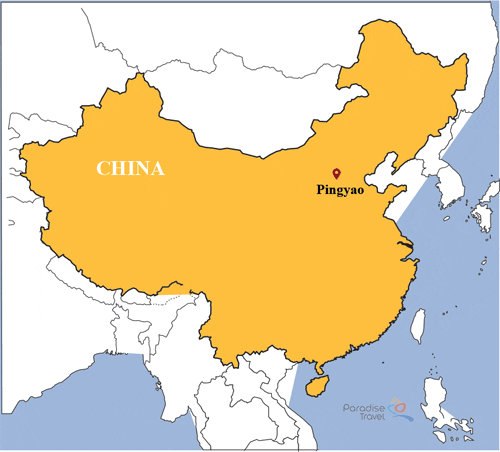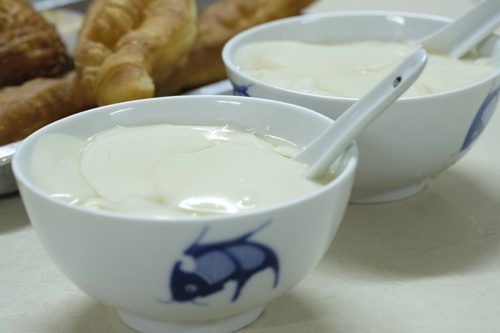Pingyao Travel Guide
 Pingyao is one of the most well-preserved ancient cities in China. It is a county of Shanxi Province and located in the north of China. Once an important trading center of China, this city now is the home to several traditional residences rather than natural sceneries. Tourists can discover the quintessence of Ming and Qing architectural styles in this city. Despite its small size, this city is endowed with many historical and cultural buildings and a diverse cuisine that can delight every traveler. Nowadays, Pingyao is a popular tourist destination in Northern China.
Pingyao is one of the most well-preserved ancient cities in China. It is a county of Shanxi Province and located in the north of China. Once an important trading center of China, this city now is the home to several traditional residences rather than natural sceneries. Tourists can discover the quintessence of Ming and Qing architectural styles in this city. Despite its small size, this city is endowed with many historical and cultural buildings and a diverse cuisine that can delight every traveler. Nowadays, Pingyao is a popular tourist destination in Northern China.
Best Time to Travel to Pingyao
Pingyao belongs to temperate monsoon climate zone with four distinct seasons. Since this city is located in the north of China, winters in Pingyao are cold and the temperature can reach -12 degrees Celcius. Summers are hot here with an average temperature of 28 degrees Celsius. This city also experiences the high level of rainfall during summers. The best time to visit Pingyao is from March to October.
Pingyao Travel Tips
- Railways and highways are highly developed in this city and it only takes 4 hours to travel from Beijing to Pingyao by a high-speed train. You can find a taxi easily in this city.
- Bargain hard when you want to buy something at souvenir stores; the sellers may charge you a higher price.
What to See in Pingyao
1. Ancient City Wall

- Pingyao Ancient City Wall
Ancient City Wall was first built in 827 BC during the reign of King Xuan of Zhou. This wall was reconstructed during Ming Dynasty in 1370 to protect the country from Eastern Mongolian enemies. Though the city wall was under several restorations, it remains intact today and becomes the symbol of powerful Pingyao.
This wall is 6 kilometers long, 12 meters high and 3 to 6 meters wide. It is built purely from bricks and stones. This wall contains six gates: one each on the northern and southern side, and two each for the eastern and western sides. There are 72 watchtowers in these four gates where you can get the bird-eye view of this magnificent construction.
2. Ming Qing Street

- Ming Qing Street
Ming Qing Street is located in the heart of Pingyao. It used to a bustling and crowded trading street during Ming and Qing dynasties. Jin (another name of Shanxi) merchants used to gather here for business and they built a lot of mansions and residences along this street. You can imagine that Ming Qing Street is an ‘ancient Wall Street of China’ due to its prosperity.
Along this 750-meter-long street, there were 700 shops selling Chinese tea, paintings, furniture, jade ware and clothing in the ancient period. Nowadays, they remained exactly the same, which creates a rustic atmosphere for Pingyao Ancient City. Don’t forget to enjoy Shanxi cuisines in some restaurants here as well.
3. Wang Family Compound

- Wang Family Compound
35 kilometers from the southwest of Pingyao, Wang Family Compound was built during Qing Dynasty (about 200 years ago). This compound belonged to Wang family, from being a bean curd seller to entering into business and politics. This family is the symbol of China’s resilience and hard work against adversity.
With the total area of 150,000 square meters, this is the second largest private residence in China with 231 courtyards and 2078 houses. Wang Family Compound is impressive not only for its luxury but also for delicate traditional architectural style. There are five alleys, five forts and four gates in this compound. You can find many exquisite furnishing, carvings and sculptures displayed here.
4. Qiao Family Compound

- Qiao Family Compound
40 kilometers from the northeast of Pingyao, Qiao Family Compound used to be a private residence of Qiao Zhiyong, the most brilliant member of the powerful Qiao Family. With an area of 9000 square meters, Qiao Family Compound contains 6 large courtyards, 20 small courtyards and more than 300 rooms.
This gigantic compound is divided into five parts: Zai Zhong Tang, De Xing Tang, Ning Shou Tang, Bao Yuan Tang and a garden. Qiao Family Compound is also a folk museum with more than 2000 pieces of precious cultural relics such as Chinese jade ware, painting and calligraphies.
5. Shuanglin Temple

- Shuanglin Temple
Formerly known as Zhongdu Temple, Shuanglin Temple is a notable Buddhist building in Pingyao. It is estimated that this temple has a history of over 400 years. It was recognized as a UNESCO Heritage Site in 1997. There are more than 2000 sculptures in this temple. The most notable one is the exquisite and lifelike One-thousand-hands Avalokitesvara sculpture.
What to Eat in Pingyao
As one of the most well-preserved ancient cities in China, Pingyao is endowed with a rich and colorful culinary culture. This city used to be an important trading center back to the imperial era. Merchants from many provinces in China had brought here different ingredients, which led to the diversity of Pingyao cuisine.
Pingyao is famous for many wheaten foods, which are the specialty of Shanxi province. More than 100 kinds of noodles and buns are served here. Hand-pulled noodle can be found in various street vendors and restaurants here. Moreover, Pingyao beef jerky, bean curd jelly, long yam and qiaomian kaolaolao are also popular dishes here. Don’t miss the mouth-watering beefy dish in Pingyao; this food has become well-known since Ming dynasty. There are not many high-end restaurants in this city; hence the dishes are homey and authentic.
1. Wantuozi

- Wantuozi
Wantouzi is a traditional noodle snack in this city. This dish was invented by a famous local chef called Dong Xuan about a century ago. The process of making Wantouzi is simple yet sophisticated: the wheat is mixed with warm water until the mixture becomes dough. Then, it is steamed for 15 minutes.
There are two ways to enjoy Wantouzi: either cold or hot noodles. When serving cold, vinegar, garlic, green onion, sesame and other ingredients are added to the noodles; while the hot version is stir-fried noodles with bean sprouts. This snack can be found almost everywhere in Pingyao, but the best one is made by Dong Xingwang, the fourth generation of Dong Xuan.
2. Beef Jerky

- Pingyao beef jerky
Beef jerky is the local specialty of this city. You can find the best beef jerky when strolling along Ming Qing street and heading to a street vendor here. The history of this dish can be dated back to Han Dynasty, and then it became popular since Ming Dynasty (1368-1644).
No need other seasonings, just high-quality beef and a handful of salt are enough to make beef jerky. The beef is salted with a special kind of local salt for one to three months and then stewed for a half day. It is fresh and juicy after stewing and its smell is appealing. You can buy Pingyao beef jerky as a local gift for your friends. The most reputable brand is Guanyun beef; you can find their products in souvenir stores and supermarkets.
3. Bean Curd Jelly

- Bean Curd Jelly
Bean curd jelly is a local cheap snack which is simply made from very soft tofu. The tofu is mixed with a special sauce containing noodles, soy sauce, and other ingredients. Bean curd jelly tastes light and tender and it is a great dessert for refreshing.
4. Yellow Wine

- Pingyao yellow wine
This wine is made from yellow sticky rice with yeast. The taste is not as strong as other local alcohols. Changshengyuan Restaurant is a popular place where you can find high-quality yellow rice wine.
Most famous restaurants in Pingyao
- Yunjincheng Restaurant: No.64, South Avenue, Old City
- Tianyuankui Guesthouse: No.73, South Avenue, Old City
- Ju Guang Ju Hotel: No.20, Shuncheng Road, Old City
- Yide Hotel: No.16, Shaxiang Street, Old City
- Backpacker: No. 198, West Street
- Zhongdu Binguan: 1 Shun Cheng Road
- Guang Ju Yuan: Xiguan Dajie, Pingyao
- Pingyao Qin Ge Da Guo Zai: Beiguan Dajie









